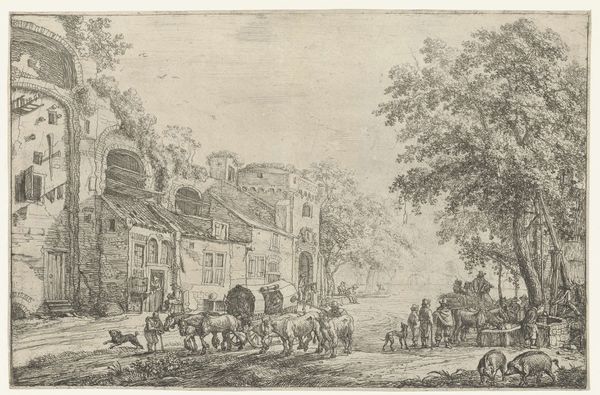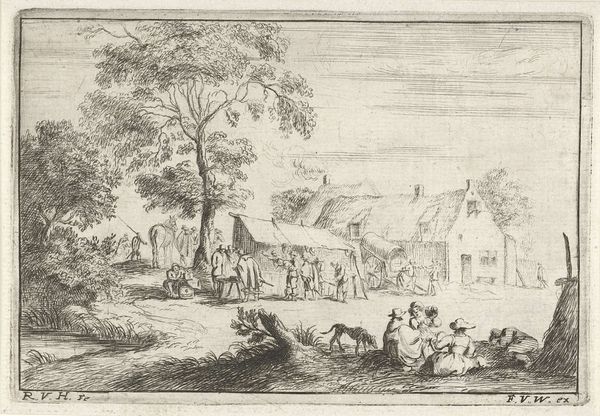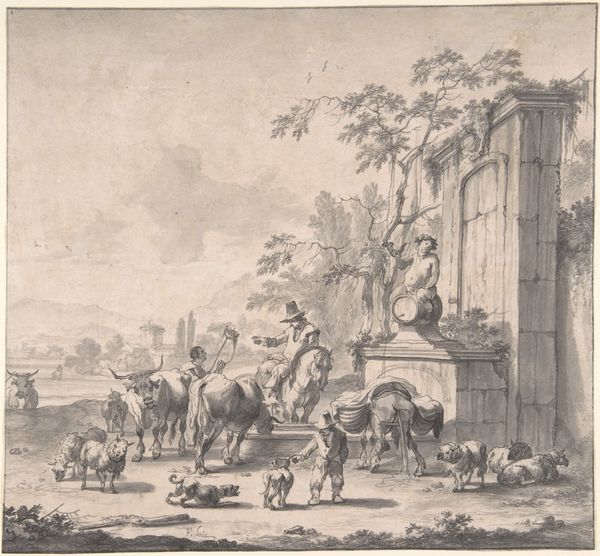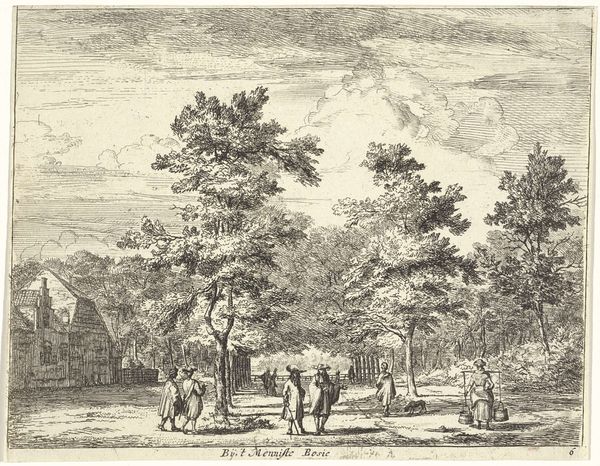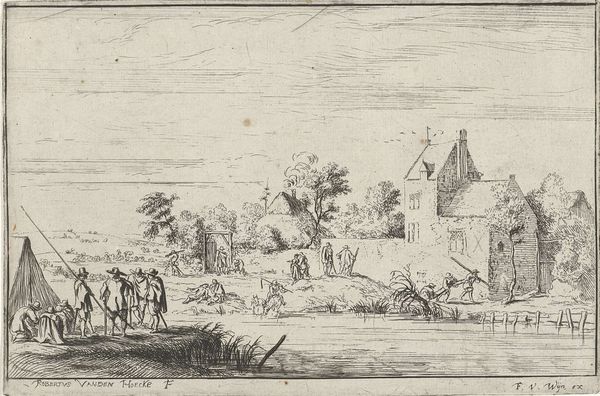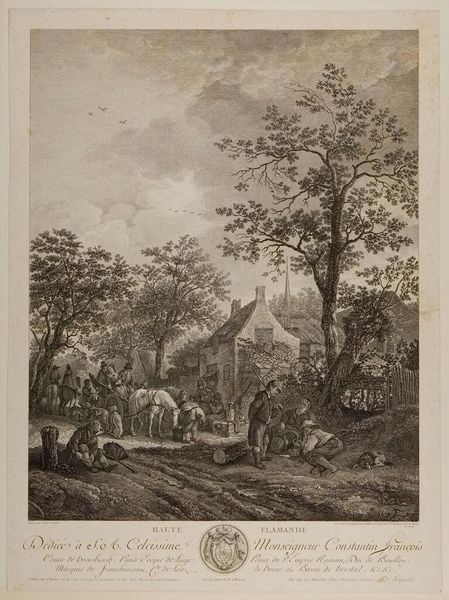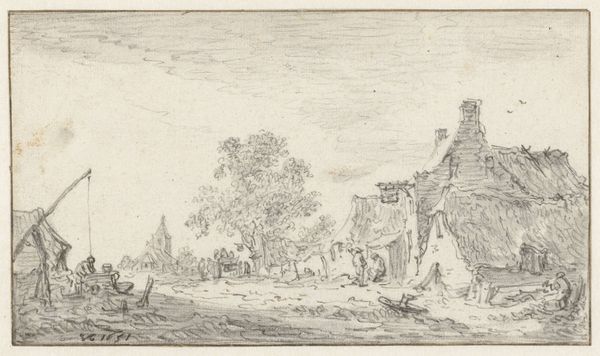
print, etching
#
baroque
#
dutch-golden-age
# print
#
etching
#
landscape
#
genre-painting
Dimensions: height 189 mm, width 286 mm
Copyright: Rijks Museum: Open Domain
Editor: So this is Simon de Vlieger’s "Toegangsweg van een stad", an etching probably made sometime between 1610 and 1653. It’s such a busy composition, lots of figures, animals, buildings, trees… a whole world contained in this relatively small print. What do you notice first about this image? Curator: Immediately, the eye is drawn to the contrast between the detailed foreground and the receding background. Notice how Vlieger manipulates the etched lines to create depth. The foreground displays closely spaced, dark lines that progressively lighten and thin, constructing a convincing aerial perspective. Editor: It's interesting how that depth also relies on the architectural structure on the left and the road stretching back in the center of the print. Do those lines mean something specific, beyond creating perspective? Curator: Observe how the crumbling edifice juxtaposes the vibrant road. This creates a dynamic tension between decay and vitality. The etcher captures both the material textures of crumbling architecture and the fluidity of organic elements through the interplay of lines, essentially conveying two separate but related states of being within a single plane. What emotions does it stir in you? Editor: A sense of nostalgia, perhaps? Like a memory fading, or a grand story being told, though I'm unsure exactly what the story is. I appreciate the level of detail and how much he was able to capture with simple lines. Curator: Indeed, it exemplifies how much visual richness an artist can achieve by purely exploiting variations in linear composition, shading and contrasting textures. I am left reflecting on the transient beauty of life as it is depicted.
Comments
No comments
Be the first to comment and join the conversation on the ultimate creative platform.

